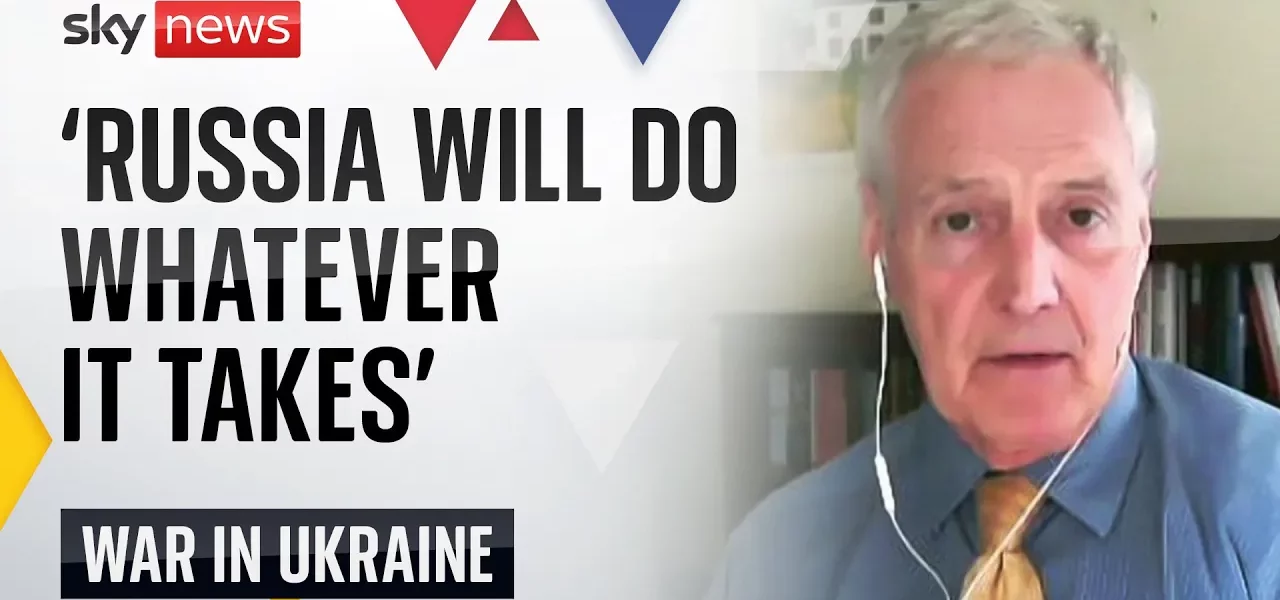What More Do We Know About the Size of This Incursion

This article delves into the complexities of the ongoing military conflict between Ukraine and Russia, exploring the size and implications of recent incursions, military strategies, and the controversial use of chemical weapons.
Introduction
The ongoing conflict between Ukraine and Russia has evolved significantly, with recent developments indicating a substantial increase in military activity. As of now, the Russian incursion has expanded to approximately 30 miles long and 18 miles deep, which, although small in the broader context of Ukraine and Russia’s vast territories, represents a considerable escalation in military terms. This article examines the implications of this incursion, the territorial dynamics at play, and the contentious issue of chemical weapons usage in this conflict.
Current Situation of the Incursion
Recent reports indicate that the Russian forces have not managed to contain or push back the Ukrainian military, resulting in an incursion that continues to grow. The territory in question, while relatively small, is critical in military terms, especially when compared to other regions within Ukraine that have been contested for months.
Geographical Overview
The incursion’s dimensions—30 miles in length and 18 miles in depth—are noteworthy even though they may seem minimal on a map. The settlements of Topino, Zuril, and OPI Kadz have become focal points of conflict, highlighting the shifting lines of control in the region. The Ukrainian forces are actively engaging in operations to push back against this incursion, aiming to reclaim territory and establish a stronger defense.
Military Strategies
The strategic response from Ukraine appears to be focused on expanding their control outward from the current pocket. However, this aggressive stance comes with risks, as advancing too far could leave their units vulnerable to counterattacks. Logistics and reinforcements play a crucial role in this dynamic.
Allegations of Chemical Weapons Usage
One of the most controversial aspects of the current conflict is the alleged use of chemical weapons by Russian forces. Reports suggest that substances like CS gas, which is legal for domestic use but prohibited in military engagements, have been deployed in the battlefield.
Understanding Chemical Weapons Legality
CS gas is often used for riot control in civilian settings; however, its use in warfare is illegal due to its potential lethality in concentrated forms. The implications of such actions are severe, as they not only violate international laws but also put soldier lives at risk.
Evidence and Allegations
While there are numerous allegations regarding the use of chemical agents, it is essential to approach these claims with caution. Misidentification of various battlefield smoke and gases can lead to misunderstandings. Nonetheless, the consistent reports of chemical weapon usage in this conflict raise serious concerns.
Russian Military Movements and Strategy
Despite the ongoing hostilities, there are indications that Russian forces may be considering a redeployment of their troops, possibly reallocating resources from other fronts. However, definitive evidence of this movement remains elusive.
Troop Allocation Challenges
The Russian military’s reliance on conscripted troops and internal forces has been a point of contention. The Rosgvardia, numbering around 400,000, is primarily tasked with internal security and lacks the effectiveness required for conventional warfare against a determined opponent.
Potential Redeployment Implications
If Russian forces decide to redeploy elite units from southern fronts, it could shift the balance of power significantly. The Ukrainians have demonstrated resilience and adaptability, but any loss of focus or troops could compromise their current positions.
Ukrainian Response and Defensive Strategies
As Russian forces regroup and potentially redeploy, the Ukrainian military must remain vigilant. The possibility of a diversion of Russian forces presents both opportunities and risks for Ukraine.
Defensive Priorities
Key cities in the Donbas region, such as Slavyansk and Kator, are critical for Ukraine’s defense. If these cities fall, it could lead to significant territorial losses. Hence, the Ukrainian military is strategizing to protect these vital areas while managing their advancements.
Strategic Opportunities
Should the Russians pull back their forces, Ukraine may seize the chance to reinforce their defense lines further south. However, this requires careful planning to avoid overextension and vulnerability.
Conclusion
In conclusion, the ongoing conflict between Ukraine and Russia is marked by significant military developments, including expanding incursions and the controversial use of chemical weapons. The strategic decisions made by both sides in the coming days and weeks will be critical in determining the outcome of this conflict. As the situation evolves, it remains essential for observers and analysts to monitor these developments closely.
For more insights on military strategies and updates on the Ukraine conflict, visit our related articles on this website.
“`




